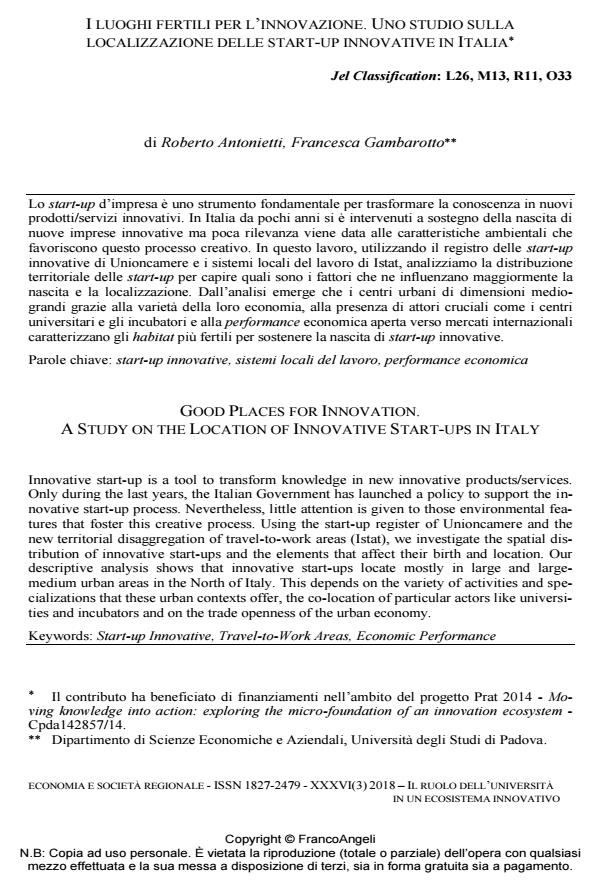Good places for innovation. a study on the location of innovative start-ups in italy
Journal title ECONOMIA E SOCIETÀ REGIONALE
Author/s Roberto Antonietti, Francesca Gambarotto
Publishing Year 2018 Issue 2018/3
Language Italian Pages 10 P. 52-61 File size 404 KB
DOI 10.3280/ES2018-003005
DOI is like a bar code for intellectual property: to have more infomation
click here
Below, you can see the article first page
If you want to buy this article in PDF format, you can do it, following the instructions to buy download credits

FrancoAngeli is member of Publishers International Linking Association, Inc (PILA), a not-for-profit association which run the CrossRef service enabling links to and from online scholarly content.
Innovative start-up is a tool to transform knowledge in new innovative products/services. Only during the last years, the Italian Government has launched a policy to support the innovative start-up process. Nevertheless, little attention is given to those environmental features that foster this creative process. Using the start-up register of Unioncamere and the new territorial disaggregation of travel-to-work areas (Istat), we investigate the spatial distribution of innovative start-ups and the elements that affect their birth and location. Our descriptive analysis shows that innovative start-ups locate mostly in large and largemedium urban areas in the North of Italy. This depends on the variety of activities and specializations that these urban contexts offer, the co-location of particular actors like universities and incubators and on the trade openness of the urban economy.
Keywords: Start-up Innovative, Travel-to-Work Areas, Economic Performance
Jel codes: L26, M13, R11, O33
Roberto Antonietti, Francesca Gambarotto, I luoghi fertili per l’innovazione. uno studio sulla localizzazione delle start-up innovative in Italia in "ECONOMIA E SOCIETÀ REGIONALE " 3/2018, pp 52-61, DOI: 10.3280/ES2018-003005